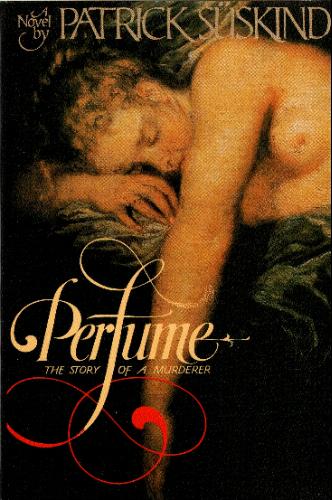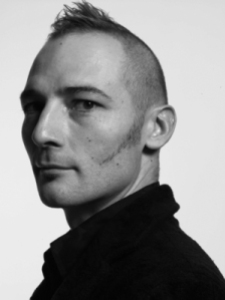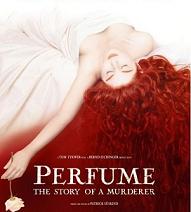Bleach, morgue disinfectant, medicinal antiseptic, camphorous muscle rub, copy toner, rubbing alcohol, headache-inducing toxicity, furniture varnish — or — velvety, sweet woods, smooth amber, a super floralizer, or a completely invisible skin scent that acts like a pheromone and aphrodisiac.
Those are the two faces of ISO E Super, an aromachemical which may be one of the great unofficial or secret ingredients in perfumery. Only a perfume addict is likely to know the name but — whether you are a hardcore perfumista or someone new to the world of fragrances — chances are that you’ve smelled ISO E Super. You simply may not have known it.
So, what is it? It is an aromachemical or a synthetic that is being used, more and more frequently, in perfumery. The Perfume Shrine has in-depth discussion of ISO E Super which is a good place for someone to start if they want to know the full details, but Elena Vosnaki also provides a shorter summary on Fragrantica:
Iso E Super® is the trademark name of aromachemical 7-acetyl, 1,2,3,4,5,6,7,8-octahydro-1,1,6,7-tetramethyl naphthalene and you can easily guess why the short code-name was invented for use instead of its long organic chemistry name. According to International Fragrances and Flavors who produce and patented Iso E Super smells:
‘Smooth, woody, amber with unique aspects giving a ‘velvet’ like sensation. Used to impart fullness and subtle strength to fragrances. Superb floralizer found in the majority of newer fine fragrances and also useful in soaps. Richer in the desirable gamma isomer than isocyclemone e’. IFFOdor profile: Synthetic note with cedar woody, abstract facets that create a fuzz on skin, extending and helping a fragrance composition radiate from the skin, very popular with modern fragrances.
The biggest surprise however comes when someone smells Iso E Super in isolation: how almost non-existent a smell Iso-E Super has (not something one would describe as a concrete smell) and at the same time how unapologetically synthetic, perhaps vaguely cedar-like, slightly sweet, nuanced, even peppery in combination with other notes it smells when you really notice it.
There is a lot of talk about how ISO E Super is, in the words of Allure magazine “the sweet smell of… nothing,” or about how its neutralness can have the crazy effect of being like a pheromone.
I don’t think any of those descriptions go far enough. Have you ever smelled a perfume where there seemed a distinct element of rubbing alcohol underneath a note of peppery wood? If so, that may very well have been ISO E Super. On my skin, large amounts of ISO E Super turn into: purely medicinal antiseptic that are reminiscent of a visit to the hospital; rubbery pink bandaids; camphorous medicine; sharply peppered woods; and what they use to scrub your skin before a vaccination shot — all combined into one. It can be loud, screechy, toxic and so powerful that astronauts in space could detect it. In small amounts, however, the shrillness of the alcohol recedes just a little to add a quiet, woody, velvety note that is highly peppered like cedar. But it is still there, still smells synthetic, and still evokes rubbing alcohol in fleeting wisps.
Some people are anosmic to ISO E Super, at least in small amounts, which means that they can’t really smell the note. The problem, however, is that there are a number of people who get severe headaches from the synthetic, even when they can’t detect it. Even more of a problem is that ISO E Super is usually not listed as an official note in a perfume list — at least, not unless it’s used in a significant quantity or the perfumer feels like being candid.
 The issue of ISO E Super came up last week in the comments discussing Ormonde Jayne’s Montabaco. As I said then, and repeat now, I do not consider myself an expert on the note, but the gallons and gallons of the aromachemical in that perfume provided a rapid crash-training course. Prior to Montabaco, I had smelled the rubbing alcohol aspect of peppered woods many a time before, but never officially and to that immense degree. Montabaco has now made me acutely aware of the synthetic in any quantity, great or small. It also made me realise that some of the perfumes that I’d struggled with in the past due to their hospital-disinfectant, sharply medicinal, toxic characteristics — Montale‘s Aoud Lime and Aoud Blossoms, I’m looking straight at you — were perfumes that must have contained massive amounts of ISO E. When I compared Aoud Lime to Chernobyl and said that a mere drop could be detected out in space by the astronauts on the Space Station, that was the synthetic at play. It’s so obvious now, in hindsight….
The issue of ISO E Super came up last week in the comments discussing Ormonde Jayne’s Montabaco. As I said then, and repeat now, I do not consider myself an expert on the note, but the gallons and gallons of the aromachemical in that perfume provided a rapid crash-training course. Prior to Montabaco, I had smelled the rubbing alcohol aspect of peppered woods many a time before, but never officially and to that immense degree. Montabaco has now made me acutely aware of the synthetic in any quantity, great or small. It also made me realise that some of the perfumes that I’d struggled with in the past due to their hospital-disinfectant, sharply medicinal, toxic characteristics — Montale‘s Aoud Lime and Aoud Blossoms, I’m looking straight at you — were perfumes that must have contained massive amounts of ISO E. When I compared Aoud Lime to Chernobyl and said that a mere drop could be detected out in space by the astronauts on the Space Station, that was the synthetic at play. It’s so obvious now, in hindsight….
But how is one to know if the note isn’t listed in the perfume and if one isn’t an expert on synthetics? What if one is just an average consumer who gets headaches from certain scents, but doesn’t know what to avoid just by looking at perfume notes? How can they know in the future with certainty if ISO E is rarely mentioned? That was the question raised by one of the readers to the blog, Jackie, who tried Ormonde Jayne‘s Ta’if and said that she got the exact same headache that she continuously got every time she wore Chanel‘s Chance Eau Tendre. At first, she thought it might be the rose note, but she hasn’t always had that problem with other rose fragrances. So, I mentioned the possibility of the culprit being ISO E Super. She had never heard of the aromachemical before but, when she investigated further, concluded that it might be the cause. Then she asked me, how she could ever know with certainty whether a perfume has it, so that she can avoid it? Her question is the reason for this post but, unfortunately, I have no answer.
The best measure of clarity that I can provide (and it is almost nothing, alas) is that certain types or families of perfumes are particularly susceptible to the “super floralizer” or “smooth woody” aspects of the synthetic. In my opinion, and speaking as a non-expert on ISO E Super, I think pure florals are the most likely to have ISO E Super in them; and the likelihood is increased even more if they are a mass-market perfume. Woody perfumes with things like vetiver, oud/agarwood, cypress or cedar are the next category where ISO E Super may provide some benefits in a perfumer’s mind, but it’s not quite as certain of a possibility across the board. I think gourmands may be the least likely category, simply by virtue of their ingredients.
None of that, however, is a rule set in stone that you can count on. There are plenty of niche perfumes which may have ISO E Super. I recently tested Dior‘s floral New Look 1947 from the prestige Privée line which definitely includes some ISO E Super, and that’s hardly a mass-market fragrance that you’ll find at Sephora or Macy’s. So, perhaps a better bet is to know your perfumers, as well as the categories of fragrances likely to have ISO E Super.
There are certain famous noses who are well-known to adore using the synthetic. Jacques Polge of Chanel is one. As a result, if you’re tempted by a Chanel floral scent — especially one in the mass-market line — be aware that there is a good chance it will have the synthetic. To wit, something like Chanel‘s Chance Eau Tendre which started this whole thing.
Geza Schoen is another admirer. No perfume incorporates more of the synthetic than the famous or infamous Molecules 01 for Escentric Molecules, a fragrance that is essentially 100% ISO E Super diluted in solvent. The recent news that he helped make most of Ormonde Jayne‘s established line of 12 perfumes may explain why that brand is also frequently mentioned in the discussion of ISO E. In fact, a while ago, I stumbled across a post on the I Smell Therefore I Am blog where a few people said that they got headaches from almost all the Ormonde Jaynes (except Tiare and Frangipani) due to the molecule.
Jean-Claude Ellena of Hermès is also a big fan of the note. According to the Perfume Shrine, he “has experimented with its magic properties many a time in the past to glorious effect: Terre d’Hermès, Poivre Samarkande and Déclaration are utilizing lots of it, exploring minimalism: the play of scents note-for-note with no sentimentality attached.” But these are only a few out of the many Hermès perfumes he has created, so clearly, one can’t simply eliminate all Ellena fragrances on the mere off-chance that it may have ISO E Super.
Andy Tauer of Tauer Perfumes may also use the aromachemical, since he raved about its benefits on his blog:
One of the well known molecules that you can use to add [an optimizing] layer is iso E Super. Many hate it, because they associate it with a particular type of perfumery (I think), some know its scent from the single molecule series, iso E super is No. 01, but mostly it is actually there, in the fragrance, where you do not really smell it but where it acts like a layer in photoshop.
It adds lift, and it soften all notes, and it brings out contrasts and optimizes a fragrance in quite a spectacular way. In a sense it is present by its effect, and less by its scent. It is not by chance that you find iso E Super in so many scents these days. Actually, the analogy to a photoshop layer is not so bad.
The Perfume Shrine lists a few of the perfumes officially known to have ISO E Super in them but states “Iso E Super is used in so many fragrances today that it would be hard to compile an actual list that would not bore everyone silly!” The perfumes on their list:
- 1 Molecule 01 (escentric molecules, 2005) 100%
- 2 Perles de Lalique (Lalique, 2007) 80%
- 3 PoivreSamarcande (Herme`s, 2004) 71%
- 4 Escentric 01 (escentric molecules, 2005) 65%
- 5 Terre d’Hermes (Hermes, 2006) 55%
- 6 Incense Kyoto (comme des garcons, 2002) 55%
- 7 Incense Jaisalmer (comme des garcons, 2002) 51%
- 8 Fierce for Men (Abercrombie & Fitch, 2002) 48%
- 9 Kenzo Air (Kenzo, 2003) 48%
- 10 Encrenoire (Lalique, 2006) 45%
Other perfumes mentioned in both the post and in the comments section are:
- Lancome‘s Trésor, which may have been the first perfume to have significantly large amounts of ISO E in it;
- Agent Provocateur‘s Maitresse;
- Dior‘s Fahrenheit which has 25% ISO E Super in the compound;
- Shiseido‘s Féminité du Bois which was created by Serge Lutens before he opened his own perfume house.
Fragrantica also has a list of some perfumes with the note, but its shortness means that it is far from inclusive. They mention:
- Molecules 01 and 02 from Escentual Molecules;
- Escentric 01 and 02 from Escentual Molecules;
- Le Labo’s Another 13;
- Prada’s Luna Rossa;
- Slumberhouse’s Invisible Musk;
- Neil Morris’ Rose Tattoo; and
- Olivier & Co. Mousse.
If we were to compile an unofficial, somewhat subjective list, based solely on my experiences, things said by others on a Basenotes thread, a Fragrantica thread, blogs, and Google searches, then other, additional perfumes with ISO E Super might also include:
- Montale‘s Aoud Lime, Aoud Blossoms and Oriental Flowers.
- Dior‘s New Look 1947 (though the ISO E is not unpleasant here to my nose and is quite subtle).
- Bvlgari Homme;
- Marc Jacob‘s Bang;
- Ormonde Jayne‘s Ormonde Woman, Ormonde Man, Montabaco and, indeed, much of the line except Tiare and Frangipani.
- Antonia’s Flowers‘ Tiempe Passate which is the basis of a discussion by Undina of Undina’s Looking Glass who notes its similarity to Molecule 01.
- Jean-Claude Ellena’s Bvlgari Bvlgari Eau Parfumee au The Vert Extreme.
- Kenzo‘s Kenzo Air (see the Fragrantica thread linked up above for mention of this and all the subsequent perfumes listed below).
- Dolce & Gabbana‘s Light Blue;
- Diptyque Eau Duelle;
- L`Occitane en Provence Eau d’Iparie;
- Sisley Sisley Eau de 3;
- Giorgio Armani Onde Mystere;
- Lancome Magnifique;
- Le Labo Rose 31;
- Dior Vetiver (La Collection Privée/La Collection Couturier);
- Parfumerie Générale Djhenné;
- Neela Vermeire Créations Ashoka;
- Amouage Opus VII (The Library Collection); and
- a number of Sonoma Scent Studio (SSS) woody fragrances, according to Laurie Erickson, the founder and nose.
Again, ISO E Super is rarely listed among a perfume’s official notes, so all of this is based simply on subjective, personal experience. But one has to start somewhere, and for those who can become ill from painful headaches triggered by a perfume containing the synthetic, something is better than nothing. At the very least, it will provide them with a starting point for further investigation if they see a fragrance mentioned on the list or in the comments.
So, can you help out? What perfumes have you smelled in which you detected ISO E Super? Are you like me where you can tolerate it in very minor amounts and can sometimes see its beneficial touch, but are repulsed by large quantities of the synthetic? Or are you anosmic to the scent? Are you unlucky enough to get headaches from it? If you adore it, what exactly about the note’s manifestation on your skin makes you such a huge fan?










 Elle‘s October 2012 article states:
Elle‘s October 2012 article states:












